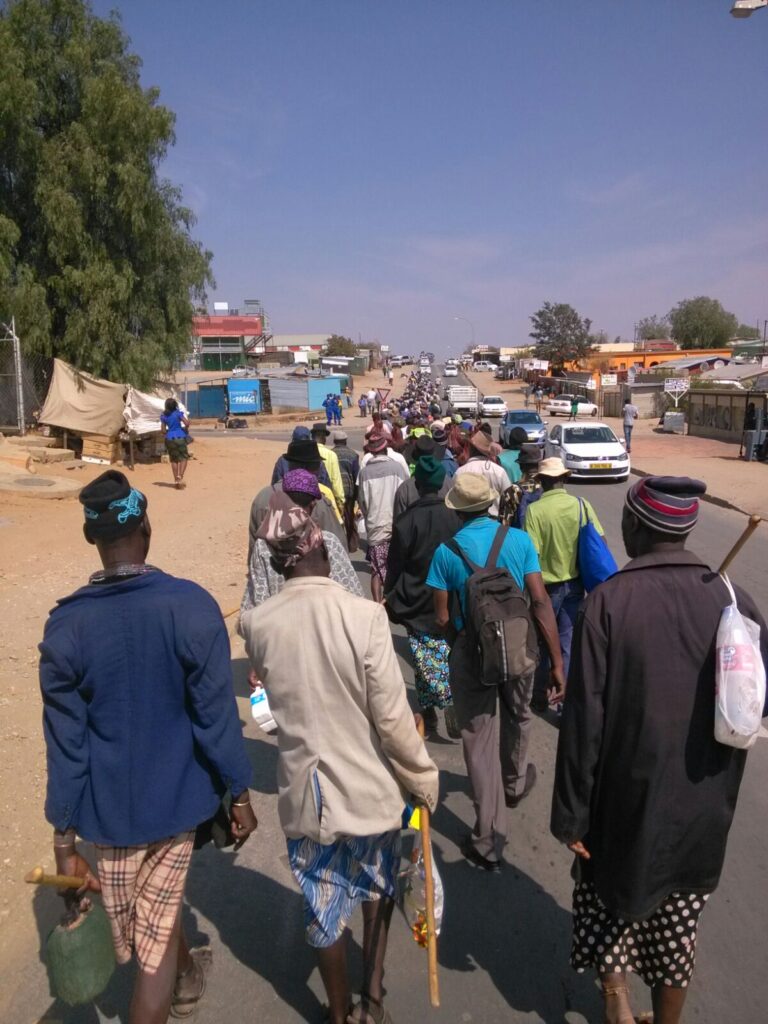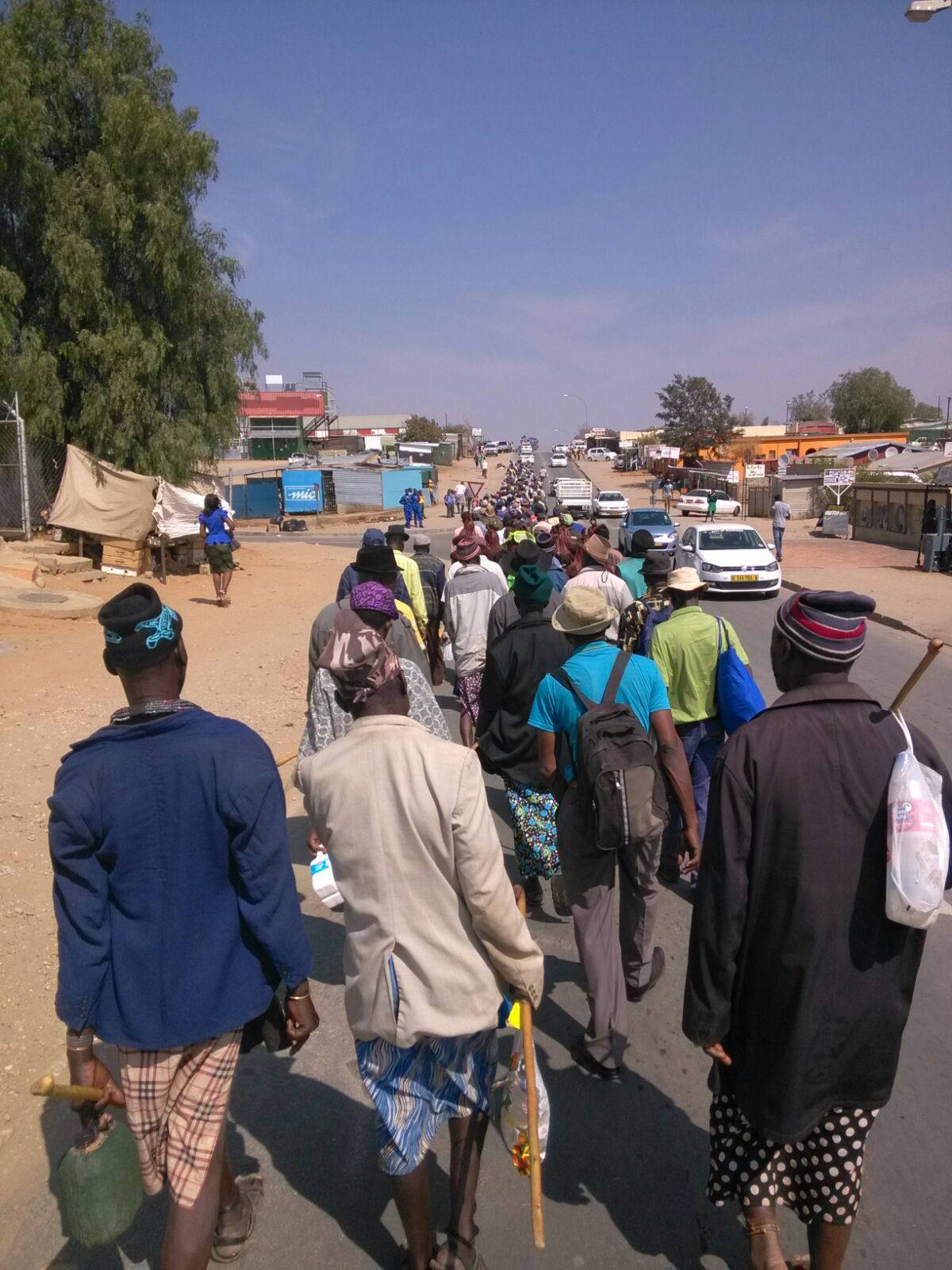By: Lennart Bolliger (Humboldt University of Berlin)
Originally Published 16 December 2016 [LINK TO ORIGINAL]
During Namibia’s liberation struggle, thousands of black Namibians were recruited into various units of apartheid South Africa’s security forces, such as SWATF and Koevoet. The black members of these units have often been simply portrayed as “collaborators”, “killers”, “makakunya”. In April 2015, President Hage Geingob even declared the end of their history: “Now the problem with defeat and winning is that dictation comes from the victor. It will be the history of the victor. His story will be told. So Koevoet and SWATF history is gone, it is gone.” Their history, however, is not gone. To the contrary, demands for government benefits by these former “apartheid soldiers”, particularly by the Namibia War Veterans Trust (Namvet), have continued to make headlines. In November 2016, a government delegation led by the President himself met with Namvet to discuss the organisation’s demands.

So why has the history of SWATF and Koevoet not disappeared? Part of the answer can be found in a statement made by President Geingob in 1992 on the policy of national reconciliation: “Many of you will recall that it is not unusual for one person from a family to be a member of Koevoet and the other a fighter with the liberation movement. Only an attempt at reconciliation could restore peace and harmony at various levels of our society.” This shows that Namibia’s liberation struggle was not a clear-cut war in which struggle heroes eventually triumphed over collaborators and makakunya. The conflict deeply divided families and communities who tried to survive amidst the chaos of war being caught in-between SWAPO’s fighters and South Africa’s security forces.
A “Complicated Situation”
The following story by Erasmus Petrus (not his real name), who joined SWATF in 1983, is far from clear-cut. Rather, it illustrates some of the difficulties and ambiguities that many Namibians faced during the war, regardless of the side they were on. Petrus was born in then Ovamboland in the mid-1960s, and, like many men of his generation, he did not finish school and instead looked for employment south of the Red Line. He became interested in politics in the late 1970s during the course of his second job in Windhoek but was soon fired after being reported to his boss for secretly organizing nightly anti-apartheid meetings.
After the police caught him trying to go into exile via Botswana, Petrus decided to return to his home village with the idea to join SWAPO in Angola. Upon his arrival there, he found many people being treated for malaria at the clinic of the local military base and he was asked to translate between the Oshiwambo-speaking patients and the Afrikaans-speaking medical staff. The base commander suspected him of being a SWAPO sympathizer and he was taken in for questioning during which his interrogators threatened to shoot him if he did not give up information about SWAPO. Petrus was released the next morning but when he returned home, his parents told him that he had to leave as soon as possible because people in the village suspected him of “working with the white people”.
Petrus feared that if he stayed, he would not only risk being attacked or even killed by SWAPO fighters but would also put his family in potential danger. Thus, unable to stay in his home village and desperately looking for a job, Petrus met with a cousin of his who had joined SWATF a few years earlier and by then had become a high-ranking officer. His cousin told him that SWATF was looking to recruit men like him who could speak and write Afrikaans. Petrus joined the unit the following year as an interpreter, often working with SWAPO fighters who had been captured by SWATF or Koevoet. In our conversation, Petrus explained that enlisting with SWATF was “not his will” but that he joined because of the “complicated situation”.
Caught In-Between
There are two aspects in Petrus’ story worth highlighting. First, joining SWAPO in exile was not easy. Some people were caught by the security forces while many others never left because they feared being arrested. Some started their journey ill-prepared and had to turn around while others starved or died of thirst on the way. Some decided to return home after the group they were travelling with turned against them because they spoke a different language or came from another village; others later disappeared in Angola. Many of those whose older siblings had gone into exile had little choice but to stay and care for their parents.
Second, distrust, fear and paranoia ruled the lives of many of those who stayed behind. It is well documented that members of SWATF and Koevoet often beat and, in some instances, killed innocent civilians suspected of supporting SWAPO. Similarly, acts of violence were committed by SWAPO fighters against the civilian population but have remained a touchy topic, particularly in the north of Namibia, which was most affected by the war. Innocent civilians suspected of “working with the white people” were killed and, in some cases, SWAPO fighters told the local population not to bury their body as a warning to other potential collaborators. In other cases, civilians used SWAPO fighters in interpersonal conflicts, for example, to eliminate a neighbour by accusing them of being a witch or a makakunya.
Part of Namibia’s History
Highlighting the above aspects is not intended to say that SWAPO was as bad or immoral as SWATF and Koevoet. That is not the point. The open examination of the difficulties and ambiguities faced by many Namibians – like Petrus – during the war allows for a deeper understanding of people’s motivations to join SWATF and Koevoet and therefore the dynamics of the liberation struggle. While such an understanding is certainly less clear-cut, it explains why the history of SWATF and Koevoet is not gone: because it is an important, if painful, part of Namibia’s history.
